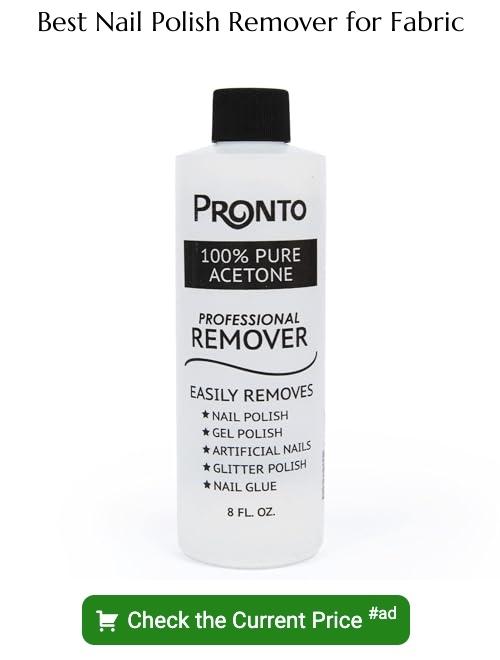Last updated on
Discover practical steps to safely remove nail polish from your couch without damaging the fabric.
Key takeaways:
- Identify fabric type and cleaning codes
- Blot the stain, avoid rubbing
- Use acetone-free nail polish remover, dab gently
- Test color fastness before applying solvent
- Consult professional cleaning services if DIY methods fail
Table of Contents
Assessing the Fabric Type
Before tackling the nail polish stain on your couch, identifying the material is crucial, as different fabrics require different cleaning approaches. Here’s what to keep in mind:
- Synthetic Fabrics (Polyester, Nylon, Acrylic): Generally more resilient to solvents such as nail polish remover.
- Natural Fabrics (Cotton, Linen, Wool): More sensitive, may not react well to harsh chemicals.
- Leather or Suede: Requires specialized cleaning methods as these can be easily damaged.
Always refer to the manufacturer’s cleaning codes often found on tags underneath cushions or on the couch’s undercarriage:
- W: Water-based cleaner safe.
- S: Solvent-based cleaner safe.
- SW: Both water and solvent-safe.
- X: Professional cleaning advised.
This information is a guide to determine the safest cleaning method for your couch fabric, reducing the risk of further damage during the stain removal process.
Blotting the Stain
Begin by gently dabbing the nail polish spill with a clean, dry cloth or paper towel. The goal is to lift as much of the polish as possible without spreading it further into the fabric fibers. Avoid rubbing, as this can push the polish deeper into the upholstery and potentially spread the stain.
Instead, use a light touch and turn the cloth to a clean area frequently to ensure you are not re-depositing polish on the couch. Continue this process until no more color transfers to the cloth. This step is crucial in minimizing the stain’s impact before proceeding to stain removal solutions.
Remember, patience is key; hasty actions can worsen the stain.
Applying Nail Polish Remover (for Appropriate Fabric Types)
Before using nail polish remover, ensure it’s acetone-free to prevent potential damage to the fabric. Start by applying a small amount to a cotton ball or swab. Gently dab the affected area, taking care not to rub, as this can spread the stain or damage the fabric fibers.
Work from the outside of the stain inward to contain it. Check the swab frequently; if it picks up the polish color, switch to a clean one to avoid re-depositing the polish onto the couch. Continue this process, using minimal product until the nail polish begins to lift off the upholstery.
Patience is key; it may take several applications to remove the polish completely.
Testing Color Fastness
Before applying any solvent to a stain, it’s crucial to ensure the treatment won’t cause discoloration. Here’s how to check for color fastness:
- Locate a hidden part of the couch, such as the underside or back corner.
- Dab a cotton swab with a small amount of nail polish remover.
- Gently apply the remover to the hidden area.
- Wait for a couple of minutes, then blot dry with a white cloth.
- Observe the cloth and the couch’s fabric for any color transfer.
If there’s no color on the cloth and the couch’s hue remains unchanged, it’s safe to proceed. If you notice color bleeding, opting for an alternative stain removal approach or professional help would be wise to prevent damage.
Consulting Professional Cleaning Services (if DIY Methods Fail)
In cases where do-it-yourself attempts are ineffective, seeking the expertise of professional cleaning services is a prudent step. Professionals are equipped with specialized tools and solvents that may not be readily available to consumers. They also possess the expertise to tackle various types of fabrics and stains without causing further damage.
When reaching out to experts, consider the following:
- Describe the incident in detail, including the type of nail polish and the nature of the fabric. This allows them to prepare the appropriate treatment beforehand.
- Ask about the methods they will use to ensure they are safe for your specific couch material.
- Inquire about any guarantees or insurance policies they offer to cover potential mishaps during the cleaning process.
- Request an estimate in advance to understand the potential costs involved.
Ultimately, entrusting your couch to professionals can restore its appearance while preserving its integrity and extending its lifespan.





